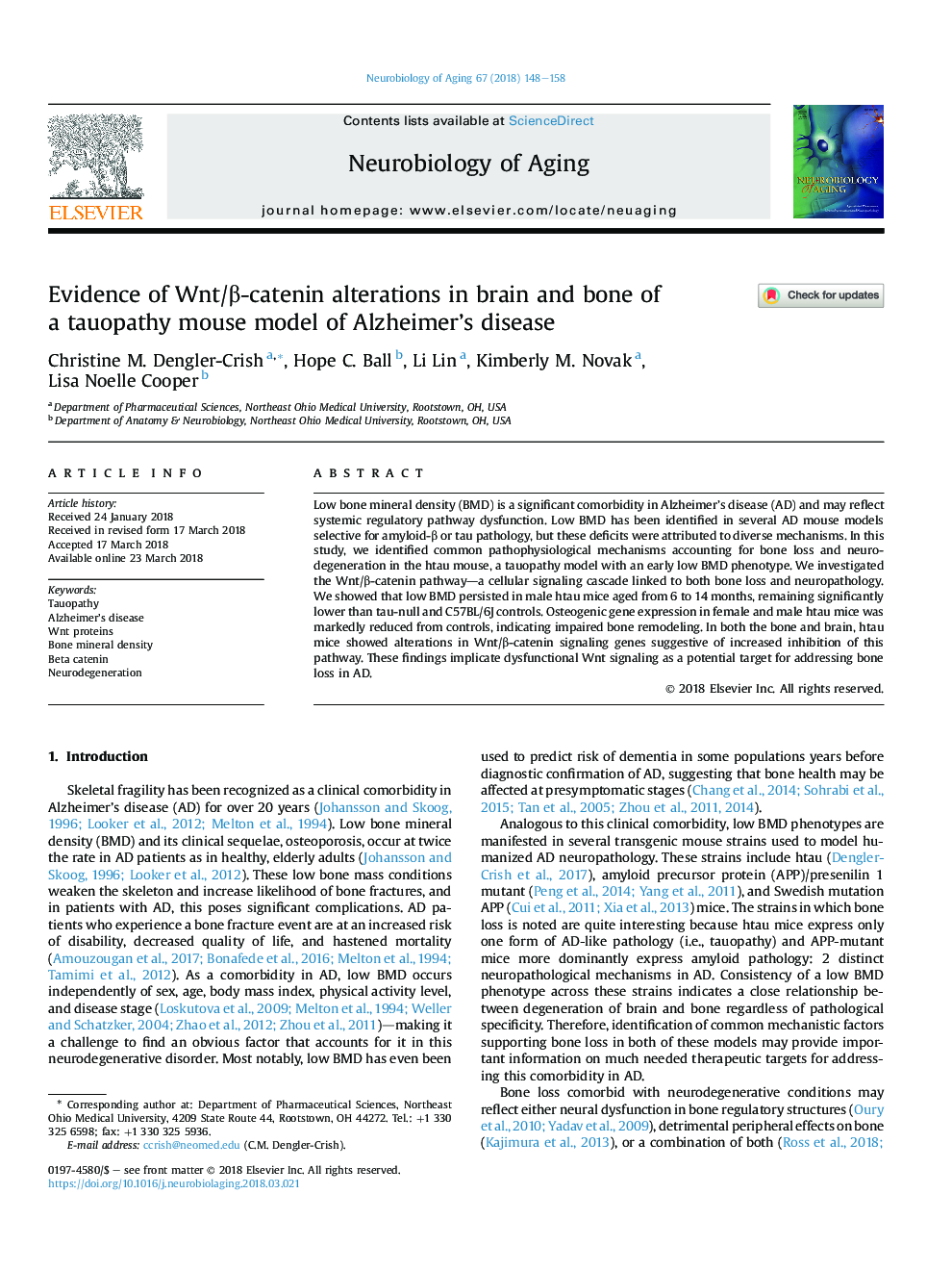| Article ID | Journal | Published Year | Pages | File Type |
|---|---|---|---|---|
| 6802927 | Neurobiology of Aging | 2018 | 11 Pages |
Abstract
Low bone mineral density (BMD) is a significant comorbidity in Alzheimer's disease (AD) and may reflect systemic regulatory pathway dysfunction. Low BMD has been identified in several AD mouse models selective for amyloid-β or tau pathology, but these deficits were attributed to diverse mechanisms. In this study, we identified common pathophysiological mechanisms accounting for bone loss and neurodegeneration in the htau mouse, a tauopathy model with an early low BMD phenotype. We investigated the Wnt/β-catenin pathway-a cellular signaling cascade linked to both bone loss and neuropathology. We showed that low BMD persisted in male htau mice aged from 6 to 14 months, remaining significantly lower than tau-null and C57BL/6J controls. Osteogenic gene expression in female and male htau mice was markedly reduced from controls, indicating impaired bone remodeling. In both the bone and brain, htau mice showed alterations in Wnt/β-catenin signaling genes suggestive of increased inhibition of this pathway. These findings implicate dysfunctional Wnt signaling as a potential target for addressing bone loss in AD.
Related Topics
Life Sciences
Biochemistry, Genetics and Molecular Biology
Ageing
Authors
Christine M. Dengler-Crish, Hope C. Ball, Li Lin, Kimberly M. Novak, Lisa Noelle Cooper,
